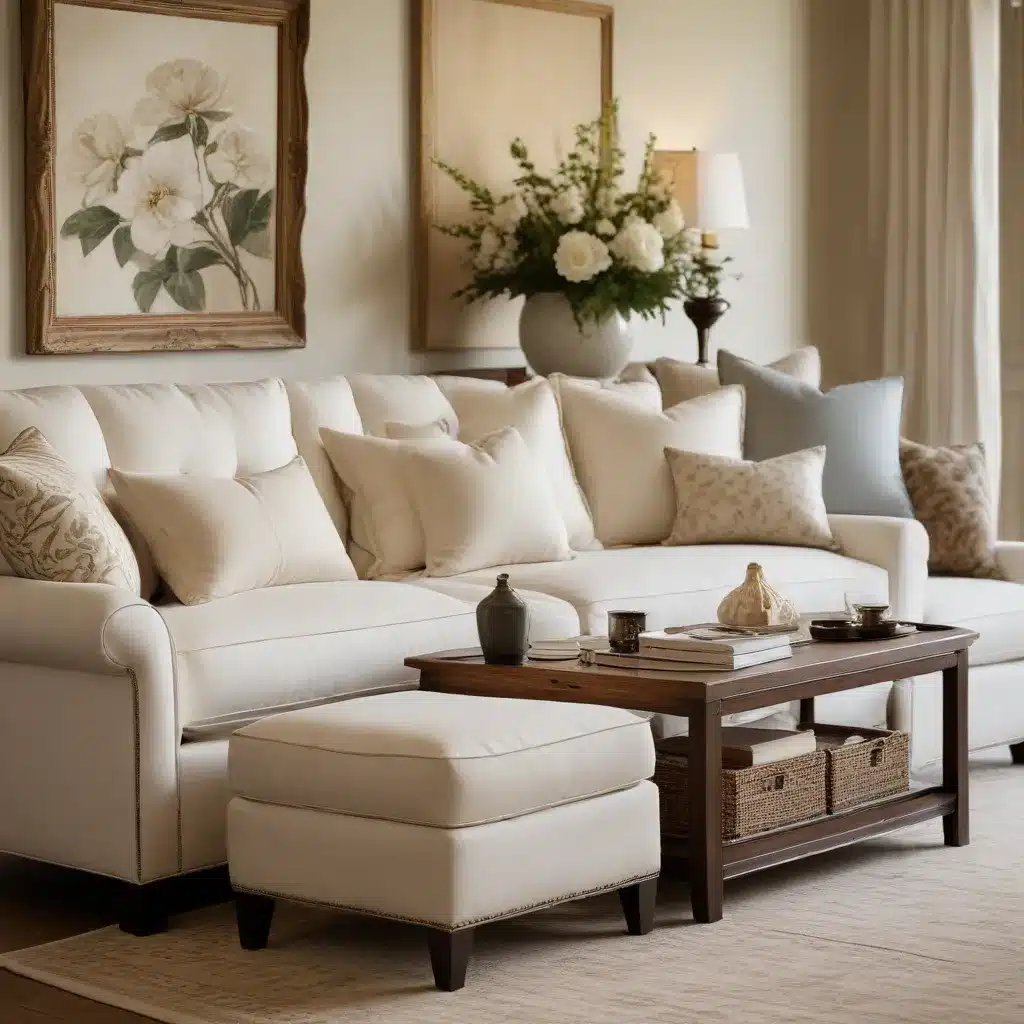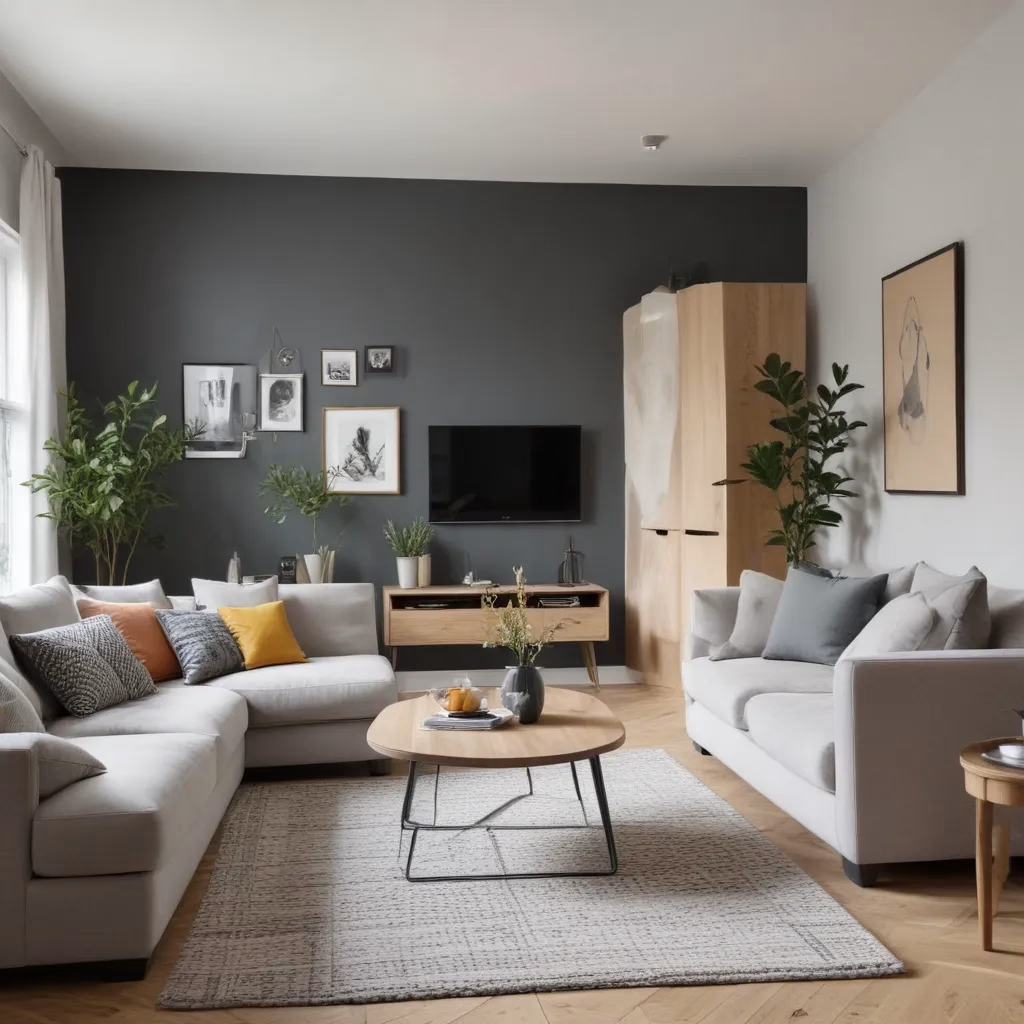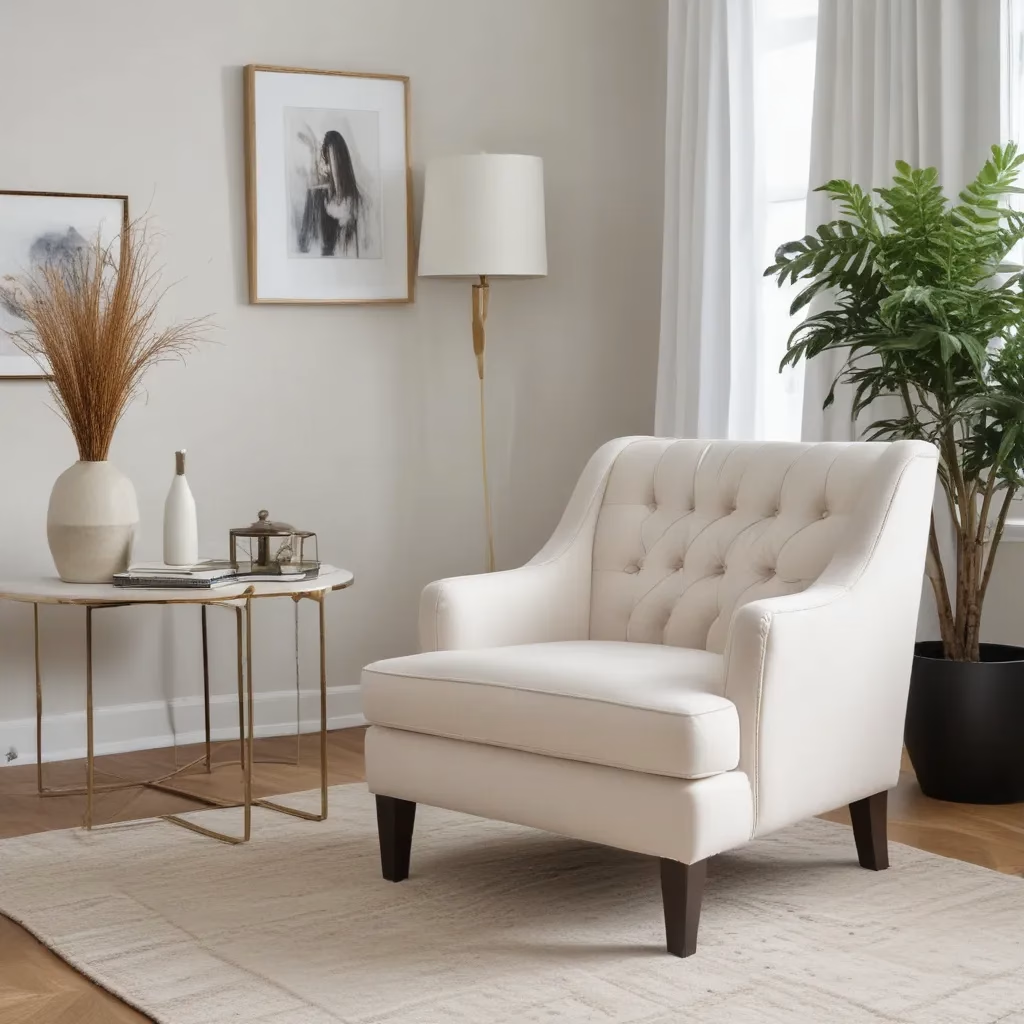
The Rise of Bespoke Sofas in UK Homes
In recent years, the UK has seen a notable shift towards handcrafted, bespoke sofas that offer both refined comfort and personalised style. This trend reflects a growing appreciation for quality craftsmanship and the desire for furniture that perfectly suits individual tastes and living spaces.
Homeowners across the country are increasingly seeking out sofas that go beyond mass-produced offerings. They’re looking for pieces that reflect their personality and meet their specific needs in terms of size, shape, and functionality. This has led to a boom in the custom sofa market, with many furniture makers reporting increased demand for made-to-order pieces.
The appeal of bespoke sofas lies not just in their uniqueness, but also in their superior comfort and longevity. When a sofa is crafted to exact specifications, it can better accommodate the ergonomic needs of its users and fit seamlessly into the intended space. This tailored approach often results in furniture that’s not only more comfortable but also more durable, as it’s built with the specific usage patterns of the household in mind.
Choosing the Right Materials for Your Sofa
When it comes to selecting materials for your bespoke sofa, the options can seem overwhelming. However, understanding the properties of different materials can help you make an informed decision that balances comfort, durability, and style.
Upholstery Fabrics
The choice of upholstery fabric can significantly impact both the look and feel of your sofa. Here’s a comparison of some popular options:
| Fabric | Durability | Comfort | Maintenance | Best For |
|---|---|---|---|---|
| Cotton | Medium | High | Easy | Casual settings |
| Linen | Medium | High | Moderate | Formal rooms |
| Wool | High | High | Moderate | All-season use |
| Leather | Very High | High | Easy | Long-term investment |
| Velvet | Medium | Very High | Difficult | Luxurious look |
Cotton remains a popular choice for its breathability and softness, making it ideal for comfortable, casual seating. Linen offers a crisp, cool feel that’s perfect for warmer climates or summer-themed decor. Wool, while less common, provides excellent durability and natural temperature regulation, making it suitable for year-round use.
Leather continues to be a top choice for those seeking a luxurious look with minimal maintenance. Its ability to age gracefully, developing a patina over time, appeals to many homeowners looking for a long-lasting investment piece.
Velvet has seen a resurgence in popularity, particularly in more formal or glamorous interior settings. Its plush texture adds a touch of opulence, though it requires more careful maintenance to keep it looking its best.
Frame Materials
The frame of your sofa forms its backbone, determining its strength and longevity. Here are some common frame materials:
- Hardwood: Oak, beech, and ash are prized for their strength and durability. These frames can last for decades with proper care.
- Softwood: Pine and cedar are more affordable options but may not offer the same longevity as hardwoods.
- Engineered Wood: Plywood and MDF (Medium-Density Fibreboard) can provide a cost-effective alternative to solid wood while still offering good stability.
- Metal: Steel or aluminium frames are becoming more common, especially in modern designs, offering excellent strength-to-weight ratios.
When selecting a frame material, consider not only your budget but also the expected lifespan of the sofa. A high-quality hardwood frame might come with a higher upfront cost but could prove more economical in the long run due to its durability.
Comfort Technologies in Modern Sofas
The comfort of a sofa goes beyond just its outward appearance. Modern sofas incorporate various technologies to enhance the seating experience.
Spring Systems
The spring system is crucial for providing support and maintaining the sofa’s shape over time. There are several types of spring systems used in modern sofas:
-
Coil Springs: These traditional springs offer good support and are often used in higher-end sofas. They can be individually wrapped to reduce noise and provide more targeted support.
-
Sinuous Springs: These S-shaped wire springs are common in many mid-range sofas. They offer a firm, even support and are more compact than coil springs.
-
Webbing: While not technically springs, webbing systems use interwoven elastic bands to provide support. They’re often used in slimline or modern designs where a low profile is desired.
-
No-Sag Springs: These horizontal zigzag springs offer a good balance of comfort and support, and are commonly used in sofas with a firmer feel.
Some manufacturers have developed proprietary spring systems that aim to provide superior comfort and longevity. These systems often use high-quality steel and innovative designs to distribute weight evenly and maintain their shape over years of use.
Cushion Fill Materials
The fill material used in sofa cushions plays a significant role in determining comfort levels. Here’s an overview of common fill materials:
-
Foam: Polyurethane foam is widely used due to its affordability and ability to hold its shape. Higher-density foams offer better durability and support.
-
Feather and Down: These natural materials provide a soft, luxurious feel but require regular plumping to maintain their shape.
-
Fibre: Synthetic fibres can offer a good balance of softness and resilience, often used as a more affordable alternative to feather and down.
-
Combination Fills: Many modern sofas use a combination of materials, such as a foam core wrapped in fibre or feathers, to balance comfort and practicality.
When choosing cushion fill, consider factors such as how the sofa will be used (occasional seating vs. everyday lounging), maintenance requirements, and any allergies family members may have.
Sofa Styles Trending in the UK
As we look towards the latter part of 2024, several sofa styles are gaining popularity in UK homes. These trends reflect a blend of comfort, functionality, and aesthetic appeal.
The Modern Chesterfield
The classic Chesterfield sofa has undergone a contemporary makeover. While retaining its signature deep buttoning and rolled arms, modern Chesterfields often feature sleeker lines and a lower profile. Upholstered in rich velvets or supple leathers, these sofas add a touch of sophistication to both traditional and contemporary interiors.
Many homeowners are opting for Chesterfields in bold colours like deep green or navy blue, moving away from the traditional brown leather. This update allows the classic style to fit seamlessly into more diverse decor schemes.
Modular Sofas
Flexibility is key in modern living spaces, and modular sofas cater to this need perfectly. These sofas consist of individual sections that can be arranged and rearranged to suit changing needs or room layouts.
The appeal of modular sofas lies in their adaptability. They can be configured as a traditional three-seater, an L-shaped sectional, or even separated into individual chairs. This versatility makes them ideal for open-plan living areas or homes where the living space needs to serve multiple functions.
Curved Sofas
Moving away from rigid, straight lines, curved sofas are making a strong comeback. These sofas add a sense of fluidity and softness to living spaces, creating a more inviting and relaxed atmosphere.
Curved designs work particularly well in larger rooms, where they can serve as a focal point and help to define seating areas within open-plan layouts. They’re often seen in plush fabrics like velvet or bouclé, emphasising their soft, inviting nature.
Incorporating Your Sofa into Your Interior Design
A sofa is often the centrepiece of a living room, and its selection should be considered carefully in the context of your overall interior design. Here are some tips for integrating your new sofa into your living space:
Colour Coordination
Your sofa’s colour can set the tone for the entire room. Here are some approaches to consider:
-
Neutral Base: A sofa in a neutral colour like beige, grey, or navy can serve as a versatile foundation, allowing you to experiment with bolder colours in your accessories and wall decor.
-
Statement Piece: Alternatively, a sofa in a bold colour or pattern can become the focal point of the room. In this case, keep surrounding elements more subdued to avoid visual overwhelm.
-
Tonal Harmony: Choose a sofa colour that’s a few shades lighter or darker than your walls for a cohesive, harmonious look.
Textile Textures
The texture of your sofa’s upholstery can add depth and interest to your room:
- Smooth Textures: Leather or tightly woven fabrics create a sleek, modern look.
- Plush Textures: Velvet or bouclé add warmth and invite touch, perfect for creating a cosy atmosphere.
- Natural Textures: Linen or cotton with visible weaves can bring a casual, relaxed feel to the space.
Consider how the sofa’s texture contrasts or complements other textiles in the room, such as curtains, rugs, and throw pillows.
Scale and Proportion
The size of your sofa should be in proportion to your room and other furniture:
- In smaller spaces, consider a loveseat or apartment-sized sofa to avoid overwhelming the room.
- For larger rooms, an L-shaped sectional or a pair of sofas can help fill the space and create distinct seating areas.
- Ensure there’s enough space to move comfortably around the sofa – a general rule is to leave at least 45cm of walkway space.
Accessorising Your Sofa
The right accessories can enhance both the comfort and style of your sofa:
- Throw Pillows: Use these to add pops of colour, introduce patterns, or bring in contrasting textures.
- Throws or Blankets: These not only add visual interest but also provide warmth and comfort.
- Side Tables: Choose tables that complement your sofa’s style and provide convenient surfaces for drinks, books, or decorative items.
Remember, your sofa is not just a piece of furniture, but a key element in creating a comfortable and inviting living space. By considering these factors, you can select a sofa that not only meets your comfort needs but also enhances your home’s overall aesthetic.
Caring for Your Handcrafted Sofa
Investing in a handcrafted sofa means committing to its care to ensure it remains beautiful and comfortable for years to come. Proper maintenance can significantly extend the life of your sofa and keep it looking its best.
Regular Cleaning
Establish a regular cleaning routine to prevent dirt and dust from accumulating:
-
Vacuuming: Use the upholstery attachment of your vacuum cleaner weekly to remove surface dust and debris. Don’t forget to vacuum beneath the cushions and in the crevices.
-
Spot Cleaning: Address spills immediately to prevent staining. Blot (don’t rub) the area with a clean, white cloth. For tougher stains, use a mild soap solution, testing it on an inconspicuous area first.
-
Professional Cleaning: Consider professional cleaning every 12-18 months, depending on usage. This deep clean can rejuvenate your sofa and remove embedded dirt.
Fabric Protection
Many handcrafted sofas come with fabric protection applied, but this can wear off over time. Consider reapplying a fabric protector annually to guard against stains and spills.
Leather Care
If you’ve chosen a leather sofa, it requires specific care:
- Dusting: Regularly dust with a soft, dry cloth.
- Conditioning: Apply a leather conditioner every 6-12 months to keep the leather supple and prevent cracking.
- Avoid Direct Sunlight: Position leather sofas away from direct sunlight to prevent fading and drying.
Structural Maintenance
Pay attention to the structural elements of your sofa:
- Cushion Rotation: Rotate and flip cushions regularly to ensure even wear.
- Leg Tightening: Check and tighten sofa legs periodically to maintain stability.
- Frame Inspection: Look for any signs of frame weakness, especially in high-stress areas like arm joints.
The Future of Sofa Design in the UK
As we look towards the future, several trends are shaping the direction of sofa design in the UK:
Sustainable Materials
There’s a growing emphasis on sustainability in furniture production. This includes:
- Recycled Fabrics: Upholstery made from recycled plastics or natural fibres.
- Sustainable Wood: Frames crafted from responsibly sourced or reclaimed wood.
- Non-Toxic Treatments: Increased use of eco-friendly fabric treatments and finishes.
Smart Integration
As homes become more connected, sofas are beginning to incorporate smart features:
- Built-in Charging: USB ports and wireless charging pads integrated into armrests or side tables.
- Adjustable Components: Electronically adjustable headrests or lumbar support.
- Temperature Control: Some high-end models are exploring built-in heating or cooling elements.
Multifunctional Designs
With urban living spaces becoming more compact, multifunctional sofas are gaining popularity:
- Sofa Beds: Advanced mechanisms are making sofa beds more comfortable and easier to use.
- Storage Solutions: Hidden compartments within sofas for storing blankets, books, or other items.
- Modular Systems: Pieces that can be rearranged to serve as sofas, beds, or even dining seating.
Customisation Options
The trend towards personalisation is likely to continue, with manufacturers offering more customisation options:
- Mix-and-Match Elements: Allowing customers to choose different fabrics for various parts of the sofa.
- 3D Visualisation Tools: Advanced software to help customers visualise their custom designs before purchase.
- Bespoke Sizing: More flexibility in sofa dimensions to fit specific spaces perfectly.
Conclusion: Your Perfect Sofa Awaits
Selecting the right sofa is a personal journey that balances comfort, style, and practicality. Whether you’re drawn to the timeless elegance of a Chesterfield, the versatility of a modular system, or the inviting curves of contemporary designs, there’s a perfect sofa out there for every UK home.
Remember, a quality sofa is an investment in your comfort and your home’s aesthetic. Take the time to consider your needs, explore your options, and don’t hesitate to seek expert advice. Many reputable furniture retailers, such as Sofa Spectacular, offer guidance and a wide range of options to help you find your ideal sofa.
By focusing on quality materials, thoughtful design, and proper care, you can create a comfortable and stylish focal point for your living space that will bring joy for years to come. Your perfect handcrafted haven of comfort is waiting to be discovered – happy sofa hunting!



